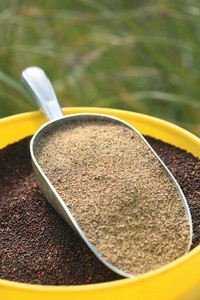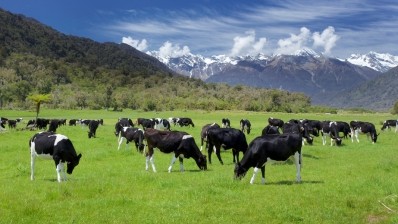Researchers crack rapeseed genome code: benefits set to be huge for animal and human nutrition, says INRA

A consortium of more than 30 research institutes, coordinated by scientists at the French national research agency, INRA, and other genetics focused agencies, were involved in the project.
"This genome sequence opens new doors to accelerating the improvement of rapeseed oil," said INRA’s Boulos Chalhoub who coordinated the international research project.
"We have discovered the mechanism by which the levels of glucosinolates, which make the crop less nutritious for livestock, can be reduced.
Our breakthrough will also help crop scientists in their efforts to make oilseed rape more resistant to disease, improve yield and its take-up of nitrogen from the soil, thereby improving its environmental profile,” he told feednavigator.
Complex genome
Oilseed rape has one of the most complex genomes among flowering plants. “The gene number is four times that of the human genome,” said Chalhoub.
The INRA researcher added that the consortium, which had been working on the research for the past five years, has detected 1,600 genes that are implicated in oil-based synthesis, findings which again will support researchers aiming to develop rapeseed variants rich in omega-3 for human and animal feed needs.
The international genome sequencing research project’s results were published in the journal, Science, last month.
World production of rapeseed is growing rapidly. The Food and Agriculture Organization (FAO) of the UN reports 36 million tons of the crop were produced in the 2003 to 2004 season, while it estimated that 58.4 million tons were produced during 2010 to 2011.
UK oilseed rape project
Numerous rapeseed breeding projects are taking placing globally at crop research institutes.
This publication reported in July on how UK plant experts are looking at ways of improving the nutritional value of rapeseed and meal for non-ruminants.
Researchers at the Home Grown Cereals Authority (HGCA) released the conclusions of a 13-month desk-based study which found improved oilseed rape (OSR) varieties with lower glucosinolate content and a thinner seed coat, resulting in higher oil and protein, and less fiber, would provide real value for the pig and poultry feed market.
Yellow seed varieties were also deemed to be beneficial, said the UK researchers, due to their association with a reduction of undesirable polyphenols in the seed coat.
The plant scientists said that, in regard to thinner yellow-coat types, breeding for this trait had been attempted in the 1990s but abandoned due a high level of harvest damage.
Since that time, newer yellow-seeded types of Brassica napus, developed in Canada and France, have become available and the HGCA team are calling for these to be tested under UK conditions so their value for the UK feed sector can be quantified.
And the HGCA team said it is following up on the desk-based research with three nutrition focused initiatives looking at how higher levels of rapeseed meal could be included in the diet of pigs, broilers and layers without compromising tight feed specifications or animal performance.












